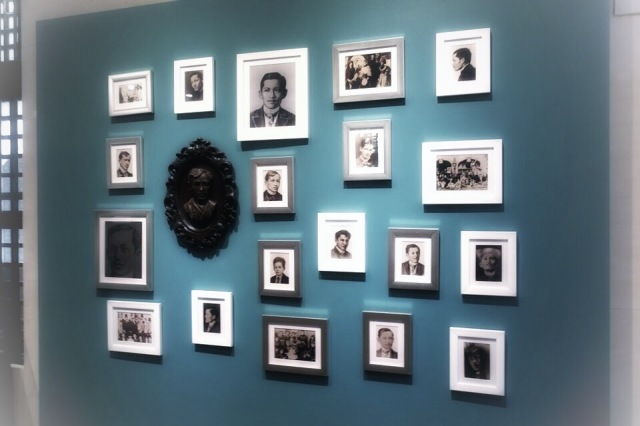A popular quote of Jose Rizal, the Philippines’ national hero, goes “Ang hindi marunong tumingin sa pinangalingan; hindi makararating sa paroroonan.” (He who does not know how to look back at where he came from will never get to his destination.) In concurrence with Rizal’s words, I always keep in mind, my origins. Thus, when I visit, I take it as an opportunity to reacquaint with my Filipino heritage.

A wall of pictures of Philippine national hero, Jose Rizal, at the Rizal Shrine in Fort Santiago, Intramuros.

Plaza Roma
The Philippines was under Spanish rule for more than three hundred years. Spanish influence is deeply ingrained in the Filipino culture – beliefs, traditions, food, among others. To get acquainted with the Philippines, one has to get acquainted with its history under Spanish occupation.

The Spanish brought Catholicism to the Philippines. It is deeply embedded in the nation’s culture, earning the title as the only Catholic country in Asia.
I’m sharing a glimpse of the Philippines’ Spanish past via Intramuros. A stop by these various attractions gives a bit of information on the country’s history under the Spaniards.
1) Plaza Roma is the center of Intramuros. Here, is a monument of Charles IV of Spain to honor his sending the first batch of smallpox vaccine to the Philippines.

2) Manila Cathedral is a Roman Catholic basilica in Plaza Roma. It is the see of the Archbishop of Manila. The cathedral had been visited by three popes – Paul VI, John Paul II, and Francis.

3) Manila Collectible is a gift shop featuring original Filipino products. The lady who tends the shop gave our group a free talk on alibata, the indigenous alphabet of the natives in the Philippines. One does not need to buy anything. This shop is a wonderful way of getting to know the products of the different regions of the country.

4) Calle Real is a street in Intramuros that shows what it was like during the Spanish era. There were cars parked on the street which was an eye sore. Just erase them from the scene to get a more authentic visual. 😉
5) San Agustin Church is a UNESCO World Heritage Site. The original church made of bamboo and nipa no longer stands. It was the first religious structure constructed by the Spaniards in Luzon. San Agustin Church is the oldest stone church in the Philippines.

6) Puerta Sta Lucia is one of the Gates of Intramuros. Visitors can actually walk along the walls. There are some pretty views around to see. We happened upon a TV or movie shoot. This brought some excitement to our group as they spotted a local heartthrob.

7) Casa Manila is a museum showing colonial lifestyle during Spanish occupation. Made of stone and wood, it is a copy of a grand house from the 1850’s . Inside the mansion are furniture and decor popular among the wealthy in Spanish times. 

8) Fort Santiago is a fortress built in 1590 by Spanish conquistador, Miguel Lopez de Legaspi. It is where Jose Rizal was imprisoned before his execution. Inside, is the Rizal Shrine Museum that displays Rizal memorabilia.


Noli Me Tangere, or Touch Me Not is one of the two books written by Jose Rizal criticizing abuse of Filipinos by their Spanish conquistadores.

Pingback: Heritage: Shiva Temple | What's (in) the picture?
Intramuros is my favorite place in Manila.
LikeLiked by 1 person
So nice of you to feature these sites Dee, our cultural heritage.
LikeLiked by 1 person
The Philippines has so much history. It’s a pleasure to share.
LikeLiked by 1 person
I love Intramuros I was happy while being a student there!
LikeLiked by 1 person
That’s great!
LikeLiked by 1 person